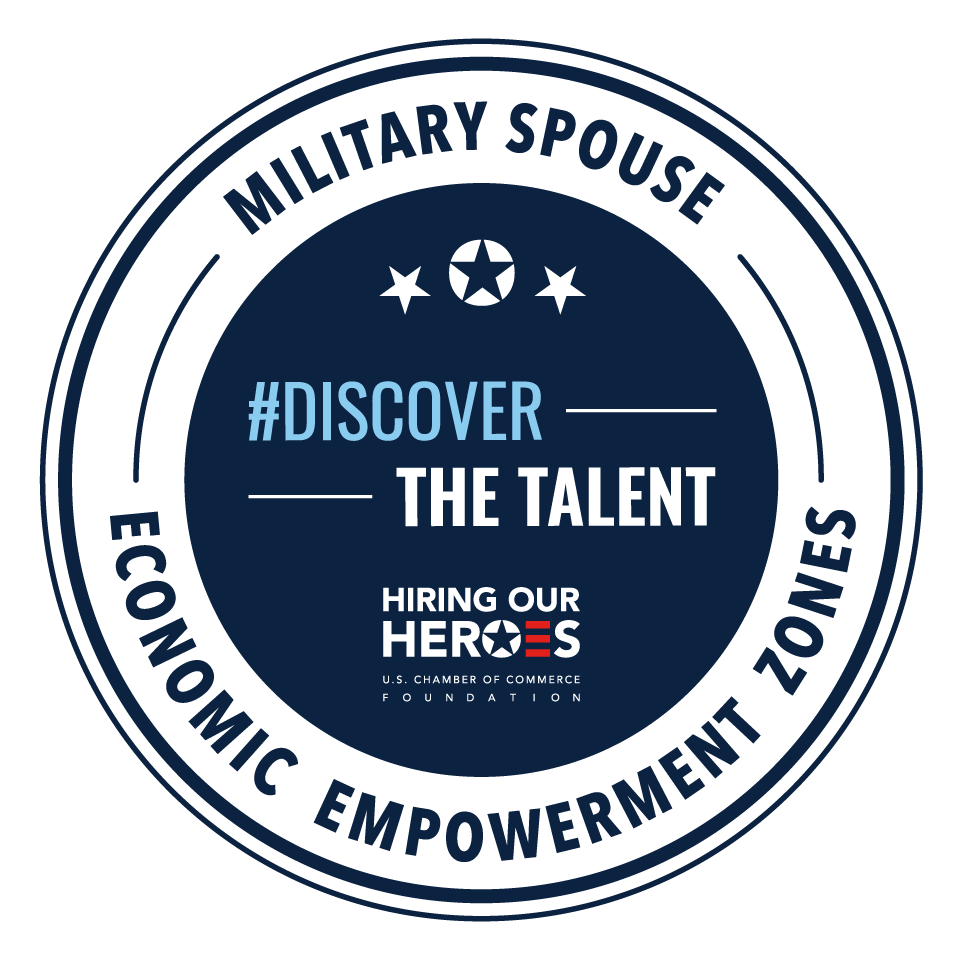20 Ways to Grow Your Nonprofit
Congratulations! If you’re interested in growing your nonprofit, that means you’ve gotten past those first few rocky months/years where everything is about survival and you’re looking to expand. That’s great news! And by growing your nonprofit, you’ll be able to serve more people and leave an even greater impact on the world. Here are 20 suggestions to support you in that effort:
1. Put your mission first. What is your why? It should be abundantly clear across your website and social media sites as well as in your presentations and grant proposals. Why do you do what you do? And why does it matter? Whenever you are considering a new opportunity, your first question should be, “Is this aligned with our mission?” If it’s not, it’s not something you should be investing time, manpower, or resources on.
2. Differentiate yourself. It’s great to have a mission you’re excited about. But in a world of many nonprofits competing for attention and funds from a much smaller number of funders, you need to be able to articulate what makes your organization different from what other organizations might be doing in a similar space. What is your unique value proposition?
3. Be a lean, mean, bootstrapping machine. You don’t need big bucks to do big, important work. What you do need is to be creative and resourceful. And while the internet and well-intentioned people will tell you that you need all the bright shiny things, that’s not really true—whether you’re a start-up or a more established nonprofit. Be deliberate with the choices you make about where you spend money and whether those expenditures will yield a good return on investment.
4. But realize, too, that it’s smart to invest in the right tools. There are things that are worth the spend—like the proper vetting of new hires, tools and resources that will help you work smarter, and professional development that will keep your organization up to speed with new trends and skills.
5. Become a master storyteller. People don’t give money to places; they respond to stories about people and the difference you’re making in their lives. Storytelling should be a part of everything you do from your social media platforms to your website, from your marketing materials to your elevator pitch. Who has been impacted by your work and how? Share those stories!
6. Gather testimonials. Client videos and thank-you notes are very compelling. But remember that clients aren’t the only ones who find value in your organization. Your community supporters and funders are involved because they’re passionate about your work too! A funder’s “Why I Give” story might be just what you need potential donors to see to prompt them to become an actual donor!
7. Build “brand” ambassadors. You don’t need a huge marketing budget to promote the work you do. What you do need are people who are excited to be a part of it. Don’t underestimate the value of word-of-mouth referrals and recommendations. Happy funders, happy partners, happy clients—let them be members of your fan club. And encourage them to help you build its membership!
8. Utilize volunteers. Even if you’re a small staff (or let’s be honest, often a staff of one), you don’t need to work alone. Leverage the time and interests of others—whether they’re high school kids needing community service, college kids looking for internship hours, or local seniors wanting an opportunity to be of service. There’s an entire free workforce available to you if you make volunteer engagement part of your organizational culture.
9. Tap into your connections. Your network is bigger than you think it is. Your family, friends, board members, alumni community, etc. are all great sources for introductions to the people and organizations who can help you further your mission.
10. You can expand the highway but stay in your lane. You know your strengths and superpowers. Focus your time and efforts there. Don’t chase money that’s not aligned with what you do well. Resist the temptation to do all the things. Do your thing exceptionally well.
11. Demonstrate impact. It’s great to be passionate about your nonprofit’s work. And smiling, grateful service recipients are a beautiful and treasured thing. But potential donors want more than warm fuzzies. They want metrics about impact. How many meals did you serve? How many veterans did you secure employment for? What percentage of high school kids went to college because of your initiative? Be able to quantify the difference you make.
12. Build assessment and evaluation into everything you do. Track your social media metrics so you can speak to how interest is growing in your cause. Set clear goals for what you want to accomplish and plans to measure progress toward those goals. Again, be prepared to provide data along with those great stories about lives changed!
13. Establish trust and rapport. Say what you mean and do what you say. Be trustworthy and transparent. Share your outcomes and financials, even when they’re less than ideal. Be honest about what’s working and where you might need to make changes. Funders are more likely to give to a nonprofit that may have some challenges but also has insight about how to move the needle than they’ll be to an organization painting a rosy (but dishonest) picture about their efforts.
14. Ask for help. Whether it’s help on a project or guidance from someone else in the nonprofit space who seems to have it all figured out, don’t be afraid to ask. Asking for help doesn’t demonstrate weakness. It takes a strong person to call in resources he or she may not have at their disposal. (And while leaders of small nonprofits often find themselves wearing many hats, nobody is good at all of the things!)
15. Build a team that complements each other’s strengths and weaknesses. You don’t want a bunch of people who think exactly as you do. You want people to challenge and inspire you. You want people who will push back when an idea isn’t perhaps the right one for the time. You want out-of-the-box thinkers who will bring creative solutions to the table when you’re short on answers. Surround yourself with a diverse team of people passionate about the work you do.
16. Learn to say “no.” Remember when we talked about chasing all the funding, even if it wasn’t aligned with your mission? That’s a great time to say “no.” The same applies to taking on new projects or programs when your team and/or resources are already stretched thin. Or agreeing to speak at all the places or attend all the events when you’re already overtasked with what’s on your plate. The fear of missing a great opportunity is real. What’s worse than a missed opportunity is dropping the ball on a commitment you make that you don’t have the bandwidth to keep.
17. Diversify your funding. While it’s true that not all money is the right money for your nonprofit, it’s also true that it’s a mistake to rely on a single funder or funding type to maintain your financial stability over time. Companies can fold. Funders can choose to focus on other priorities—like responding to a global pandemic—instead of continuing to fund programs they’ve typically funded in the past. Money can leave much more quickly than it comes in. Putting all your eggs in one proverbial basket means that when that one funding source dries up, you’re left with an empty basket. There are many different vehicles for raising nonprofit funds: events, grant writing, corporate sponsorship, etc. Consider having more than one funding stream in your portfolio.
18. Collaborate with others. Don’t believe the lie people like to tell that everything is a competition and that with scarcity of resources your goal is to win at another nonprofit’s expense. Yes, it’s true that there are finite resources. But it’s also true that partnerships with other nonprofits/groups can benefit both parties. By working together, you can increase your scope and reach. (And many funders tend to prefer funding collaborative endeavors anyway!)
19. Engage with your community. All right, this one really should have been much higher on this list because it’s that important and can make many of the things listed above much easier to accomplish. Your community is, or should be, a source for volunteers, ambassadors for your cause, businesses/companies interested in supporting the work you do and more. But this relationship can’t be one-way. Make clear the value you offer your community through the work you do. Let them know that you’re there to serve their interests via whatever service your nonprofit offers. You need each other!
20. Plan ahead. Your first priority is to be of service. But a close second should be thoughts of sustainability. You’re doing great work and you need to make sure you can continue to do so in the months and years ahead. It is easy enough to be overwhelmed by the mundane daily tasks involved with running a nonprofit. But regular time must be scheduled and used to work on strategy and future-facing conversations about your organization if you’re to continue to remain successful over the long term.
You don’t need to attempt to employ all of these tips at once. Pick a few that speak to you—that are easily attainable—and start there. Commit to a culture of growth moving forward. With that mindset, you’re already ahead of the game!
New Powerhouse Team Member
Nicole Lauer is ecstatic to join Powerhouse Planning as a freelance social media manager. Over the course of the last decade, Nicole has gone from an active-duty military member to a full-time military spouse.
 Navigating five moves in ten years, Nicole has learned to overcome all obstacles thrown her way.
Navigating five moves in ten years, Nicole has learned to overcome all obstacles thrown her way.
In her professional life, Nicole strives to be an adaptable team member up for any challenge. She has over five years’ experience as a social media manager, communications manager, content curator, marketer, and marketing assistant.
Nicole is a graduate of the Academy of Art University in San Francisco where she earned her B.A. and M.A. in multimedia communications with a focus in social media advertisement. During her course of study, Nicole remained engaged with her military community by volunteering as an ombudsman and holding several board positions on spouses’ clubs and ball planning committees.
Nicole currently resides in Cape Canaveral, Florida with her husband, Clark; eight-year-old son, CJ; and four-year-old daughter, Zoe-Rae. In her free time, Nicole loves exploring every inch of Disney World and tasting new food offerings around the world in Epcot.
CEO SPOTLIGHT
 Bringing a Big-City Amenity to a Small Town
Bringing a Big-City Amenity to a Small Town
By: Heatherlynn Akins
When Tim and Courtney Madden met, they were young students at Penn State who dated but then went their separate ways. Little did they know their story was only just beginning and would, eventually, lead to Courtney starting her own business with Tim acting in many advisory and support roles for that business. In the eight years between Penn State and reconnecting in 1998, Tim joined the Navy and served as a diving officer on the USS Salvor in Pearl Harbor, Hawaii before starting an IT career first in Denver and then for Colorado Mountain College in the small, mountain town of Glenwood Springs. Courtney spent nine months in Madrid after graduation before returning to the States via Dallas, TX where she settled into a career as a fifth-grade bilingual teacher as well as a middle school Spanish teacher. When they married in 1999, the couple decided to make Glenwood Springs their home, where they could be near the world-class skiing resorts of Vail and Aspen. Four children later and the Maddens have become well-known fixtures in their community.
In early 2019, Courtney decided she was ready for a career change and started looking into various opportunities. A family friend, entrepreneur Johnathan Gorst, was looking to start a new restaurant delivery venture and the two began talking about the possibilities of teaming up. Before they could start operations, however, life happened, and Johnathan and his family moved to New York. Courtney was left with a concept and a desire to open KraveKar, a restaurant delivery company that contracts with locally owned restaurants to deliver meals to both hometown residents and the many tourists who flock to the town annually. It was a service not previously available to the town, but one many out-of-town visitors from the big cities expected and many residents longed for.
The idea is simple: A customer uses the KraveKar app or website to select a restaurant and places an order. Then Courtney and her team of dedicated drivers pick up the food and deliver it wherever the customer chooses, whether that’s home, a hotel, a park, or the world’s largest hot springs pool, which just so happens to be a major tourist attraction in town. While it works similarly to many of the national companies who offer this service, KraveKar comes with that small-business attention to detail. If part of your order is missing when it’s delivered, Courtney and her team will go back, pick up the missing items, and deliver them as part of their service. They’re also actively involved in the entire process, from cultivating relationships with local restaurants to driving the car that delivers your food. Courtney doesn’t believe in a hands-off leadership approach. (more…)
Did You Know?
According to the National Center for Charitable Statistics, nonprofits contribute around 5.6% of the nation’s GDP (gross domestic product). This isn’t an insignificant number, and nonprofit growth is on the rise. While most nonprofits in the United States have operating budgets under $500,000 (only 5% operate at $10,000,000 or more per year), this doesn’t mean nonprofits don’t have room to grow and expand. Just remember to be true to your mission and build on the trust of your communities and partners.
Powerhouse Planning can certainly help. Whether you outsource various projects to us to keep your operating costs down (which means more revenue for your target populations) or you want some self-guided ways to grow, check out our resources and services we offer. Powerhouse is committed to helping nonprofits grow to meet their full potential.
Don’t Miss It!
Powerhouse Planning is so excited to share that Jessica Bertsch will be speaking alongside Dr. Gary Chapman during PILLAR—the digital retreat for deployment countdowns!
Best-selling author of “The Five Love Languages” and “The Five Love Languages: Military Edition” Gary Chapman will discuss the unique challenges and opportunities deployment presents for military couples.
During his session, Dr. Chapman will answer viewers’ questions about how military couples can show love and support over a distance.
Jessica is looking forward to talking about Finding Joy (Even When You Count Down!) and sharing her favorite tips for finding joy with your spouse, your littles, and yourself.
If you’re a military spouse wondering how you can speak your spouse’s love language more intentionally during deployments AND aiming to find joy during deployments then grab your FREE ticket using the link below!
Four Tips for Growing Your Nonprofit
We understand that starting and maintaining a nonprofit can have its challenges. We’re here to help! Here are four ways you can grow your nonprofit into a successful organization.
1. Build trust.
Building a strong community with your supporters is vital to your organization’s growth. Here are a few ways you can build trust and foster community with your fans:
- Provide donors with firsthand experiences so they can see your organization in action. Even if they don’t all take you up on your offer, you are still opening the door of trust with them.
- Provide relevant data about the need in your community and what your organization is doing to meet that need.
- Be honest and transparent with donors, volunteers, staff, and followers for a meaningful and sustainable impact.
- Express gratitude. Thank your donors for every gift. Personalize a thank-you letter for each donation and include how it will make an impact in and for your organization. You can even go the extra mile and send a follow-up thank-you note after the donor’s gift has been used that showcases the impact their donation made and, if possible, a testimonial from someone their donation helped.
The more often you communicate and build trust with donors and followers, the more inspired they will be to continue supporting your organizations mission. (more…)





